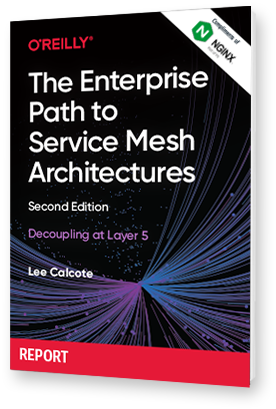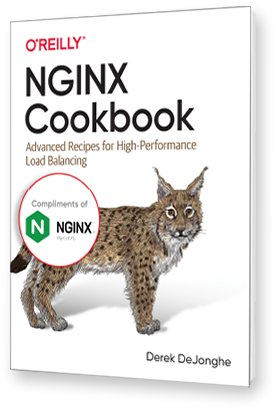NGINX has partnered with O’Reilly to drive growth, open new markets, and build awareness through content and event sponsorship since 2014. Rob Whiteley, vice president and general manager of NGINX, describes in his own words how he’s leveraged O’Reilly content to generate powerful business results unparalleled by any other partner.
NGINX shares why they partner with O’Reilly on sponsored content



Generating leads with respected content
“If this asset even smelled a little bit like marketing, we wouldn’t have been able to pull [it] off.”
O’Reilly is—I would even go so far as to say—critical to what we do from a marketing perspective.
To give you a little bit of context, NGINX is an open source technology and we don’t have any way to track who’s using our software, and that’s intentional. We don’t gate the software in any way, shape, or form. Our entire revenue engine is built on the principle that the open software is free and there is a paid, commercial version that includes support. A big part of that motion is using marketing to find users that opt into a relationship with NGINX. We identify these users [and] ask them to give us their contact information, and in exchange we provide technical content or some deep how-to guide. We realized very early on we needed a partner to produce that content. It needed to be credible and technical. We advertise it as free, but if you know developers, they’ll tell you, “My contact information is worth something, and therefore, it’s not free.”
To maintain integrity while requesting someone’s contact information, it really had to be a meaty, valuable piece of content we were giving them in return. We decided O’Reilly would be that partner, partly because the brand and their community was equally strong to that of NGINX. Offering an O’Reilly ebook meant something to the community.
Leveraging O’Reilly’s community of experts
Reaching new markets
“I can honestly say that most of the time, it’s an O’Reilly asset that helps us get started.”
Over time, we found that we could start to build out a library of other O’Reilly assets that were maybe not about NGINX but rather topics like the move to microservices or about what’s going on in Kubernetes. And this attracted yet another audience—people who aren’t necessarily power users of NGINX, which was the first community we attracted, but people who are researching topics and maybe not even aware that NGINX was a solution they could use. That allowed us to get net new contacts in and continue opening up doors, even if they hadn’t necessarily started with NGINX software. That worked really well.
Because of the investment from F5, we’ve been able to bring out new products that weren’t possible as a stand-alone vendor. Security is a good example. F5 is known as a very strong security vendor, so there was a lot of security intellectual property that we could bring to market through the NGINX products and platforms. When we made the decision to essentially become a security provider, which we had never been, we needed a way to generate awareness. We ended up getting another O’Reilly book. That allowed us to instantly attract, again, self-identified experts who were researching security and gave us the opportunity to tell our story. And now that’s the fastest growing product line within our portfolio.
When we’re generating new business models, one of our first thoughts is, “OK, well, how do we go tell the world? How do we attract an audience? How do we start the conversation?” I can honestly say that most of the time, it’s an O’Reilly asset that helps us get started.
Maintaining brand value through change
The results?
“We experiment with every type of content. We’ve partnered with all different companies. Nothing has performed as consistently as O’Reilly content has.”
We experiment with every type of content. We’ve partnered with all different companies. Nothing has performed as consistently as O’Reilly content has. I’ll give you some of the stats. Back when we got started, 92% of all of our revenue started with a marketing lead. Over time, gated content has been the largest source of that revenue, and O’Reilly has been responsible for roughly 60% of that growth. As we’ve entered different phases of growth, the percentage that marketing is contributing to the business has gone down, but the dollar volume is going up. Now marketing leads are responsible for roughly 50% of the revenue.…60% of that is gated content, and 60% of that is O’Reilly. That math demonstrates what the impact is to our revenue machine. It’s not trivial. It’s been a huge success for us. Our business is growing very rapidly. The overall impact that O’Reilly has for us is up year over year.
Interested in content sponsorship? Get the details.

